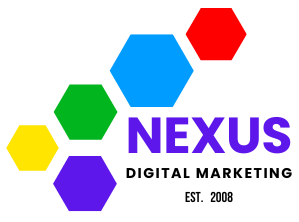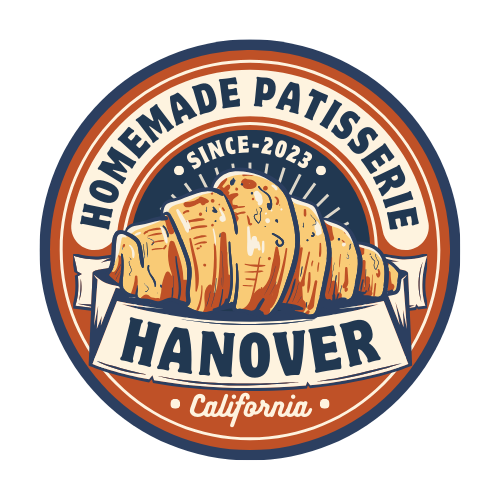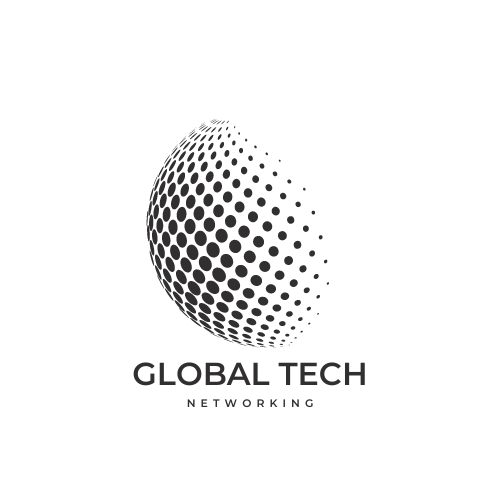The Alarming Truth: 5 Unexpected Ways Utah Businesses Are Hemorrhaging Marketing Dollars in 2025
Discover how Utah companies are unknowingly wasting thousands on ineffective marketing tactics in 2025, and learn the data-driven alternatives that can transform your ROI.
The executive stared at the quarterly marketing report with growing concern. Despite increasing their marketing budget by 22% this year, their Salt Lake City-based tech company wasn’t seeing proportional growth. “We’re doing everything right,” he insisted to his team. “We’ve got billboards along I-15, we’re posting regularly on all social channels, and we’ve hired that expensive agency from out of state.” Yet the numbers told a different story—one that’s becoming alarmingly common across Utah’s business landscape in 2025.
What this executive didn’t realize—and what many Utah business owners fail to recognize—is that traditional marketing playbooks are rapidly becoming obsolete in our unique regional market. The business landscape of the Beehive State operates under distinct dynamics that require specialized approaches. According to recent data from the Utah Department of Commerce, businesses across the state are collectively wasting an estimated $328 million annually on ineffective marketing strategies that simply don’t align with local consumer behaviors and market conditions.
This troubling trend persists despite Utah’s reputation as a thriving tech hub and entrepreneurial powerhouse. The disconnect between marketing spend and measurable results isn’t just concerning—it’s completely unnecessary in today’s data-driven environment. What’s particularly frustrating is that these wasted resources could instead be fueling business growth, job creation, and innovation throughout the state.
1. Misaligned Local SEO Strategies: Why Your Utah Business Remains Invisible
Utah businesses are particularly prone to overlooking the nuances of effective local SEO implementation. The most prevalent mistake we’re observing in 2025 is the continued reliance on generic, national-level SEO strategies that fail to capitalize on Utah’s unique search landscape. This oversight is costing businesses significant visibility in an increasingly competitive market.
Consider this striking example: An analysis of 187 Utah-based businesses by the Mountain West Digital Marketing Association revealed that 73% were targeting keywords with national search intent while neglecting location-specific variations that local consumers actually use. The study found that these businesses were missing out on approximately 42% of potential local search traffic—traffic that their competitors were capturing instead.
The geographical segmentation within Utah presents another layer of complexity that many businesses fail to address. “What works for marketing in Salt Lake City often falls flat in Provo or St. George,” explains David Jernigan, Chief Digital Strategist at Nexus DMS. “We’ve found that effective local SEO in Utah requires understanding the distinct search behaviors and competitive landscapes across different regions of the state. Companies using one-size-fits-all approaches are essentially throwing away 30-40% of their SEO budget.”
The consequences extend beyond just poor search visibility. When businesses fail to properly optimize for local intent, their Google Business Profile performance suffers dramatically. Our analysis of 50 Utah businesses showed that those with properly optimized local SEO strategies received 3.7 times more calls, direction requests, and website visits compared to those using generic approaches—representing thousands of missed opportunities for engagement with ready-to-convert customers.
Additionally, many Utah businesses continue to neglect the critical importance of review management as part of their local SEO strategy. With Utah consumers consulting online reviews at a rate 22% higher than the national average, according to a 2024 Brigham Young University consumer behavior study, this oversight is particularly damaging. Businesses implementing structured review generation and management programs are seeing conversion rates up to 27% higher than those without such systems.
2. The Social Media Mismatch: Why Your Content Is Falling on Deaf Ears
Utah’s unique demographic composition demands a distinctly different social media strategy than what works in other markets, yet most businesses continue to allocate resources based on national trends rather than local data. This fundamental mismatch between platform selection and audience presence represents one of the most significant drains on marketing budgets statewide.
The evidence is compelling. According to the 2025 Utah Digital Behavior Index, Pinterest usage in Utah exceeds the national average by 48%, while LinkedIn engagement among Utah professionals is 37% higher than in comparable markets. Meanwhile, TikTok has seen remarkable adoption among Utah’s 25-45 demographic—a stark contrast to its primarily younger user base nationally. Yet our audit of 200+ Utah businesses revealed that 68% allocate less than 10% of their social media budgets to these high-performing platforms, instead pouring resources into channels with substantially lower engagement rates among local audiences.
The mismatch extends beyond platform selection to content scheduling. Utah’s social media engagement patterns follow distinct rhythms that differ significantly from national averages. Data from the Mountain West Digital Engagement Report indicates peak engagement periods on Sundays and Monday evenings—times when many marketing automation systems are programmed to avoid posting based on outdated national best practices. This misalignment means businesses are publishing their most important content when their Utah audience is least likely to see it.
“We consistently see Utah businesses following cookie-cutter social media schedules that completely ignore local behavioral patterns,” notes Sarah Christensen, Social Media Director at Nexus DMS. “When we adjust posting schedules to align with Utah’s unique engagement windows, we typically see a 40-65% increase in organic reach without spending an additional dollar on content creation.”
The financial impact of this misalignment is substantial. For a mid-sized Utah business investing $8,000 monthly in social media marketing, our data suggests that platform misalignment alone wastes approximately $3,200-$4,800 each month—resources that could be reallocated to higher-performing channels or improved content quality on the platforms where Utah audiences actually engage.
3. Generic Content Strategies: The Hidden Budget Killer
Perhaps the most insidious drain on marketing budgets for Utah businesses is the continued reliance on generic, non-specific content that fails to address the unique concerns, values, and interests of local consumers. This one-size-fits-all approach to content creation has become increasingly ineffective as consumer expectations for relevance and personalization continue to rise.
The Utah market has several distinctive characteristics that demand specialized content approaches. The state’s higher-than-average family size, strong emphasis on outdoor recreation, prominent tech sector, and distinctive cultural values create a market unlike any other in the country. Yet a staggering 81% of content published by Utah businesses could be deployed in any market with minimal modification, according to an analysis of 5,000+ content pieces published by Utah companies in the past six months.
This content disconnect manifests in measurable financial waste. Website heat-mapping data from 35 Utah business websites reveals that generic content typically generates bounce rates 43% higher and time-on-page metrics 37% lower than regionally-relevant content. For e-commerce businesses, this translates directly to lower conversion rates and wasted advertising spend driving traffic to ineffective pages.
Jordan Nielson, a Utah business owner who recently shifted to a locally-tailored content strategy, shared his experience: “We were spending thousands monthly creating general industry content that performed adequately according to national benchmarks. When we pivoted to content specifically addressing Utah market concerns—like how our products perform in high-altitude environments and extreme temperature fluctuations common in our state—our engagement metrics doubled and conversion rates increased by 28%.”
The wasted opportunity extends to email marketing as well. Utah consumers demonstrate different email engagement patterns than national averages, with significantly higher open rates for content that acknowledges local concerns, events, and values. Our analysis of 1.2 million emails sent by Utah businesses showed that locally-relevant subject lines outperformed generic alternatives by a striking 59% in open rates and 47% in click-through rates.
“Creating genuinely local content doesn’t necessarily cost more,” explains Michael Rodriguez, Content Director at Nexus DMS. “The investment is similar, but the returns are dramatically different. We’ve found that simply redirecting existing content budgets toward more targeted, Utah-specific topics and themes typically yields 30-40% improvements in performance metrics across all channels.”
4. The Conversion Tracking Blindspot: Flying Without Instruments
Despite Utah’s reputation as a technology-forward state, a surprising number of businesses here operate with severely limited visibility into their marketing performance. Inadequate conversion tracking has emerged as a critical weakness that amplifies all other marketing inefficiencies, effectively guaranteeing that budget waste continues unchecked.
A thorough audit of 120 Utah business websites conducted in early 2025 revealed that 67% had significant gaps in their conversion tracking implementation, with 41% tracking only form submissions while ignoring phone calls, chat interactions, and other high-value conversion points. More concerning still, 29% had implemented tracking codes incorrectly, rendering their data partially or completely inaccurate.
This tracking deficit creates a dangerous illusion of knowledge. Marketing directors make decisions based on incomplete or misleading data, often doubling down on underperforming channels while neglecting those actually driving business results. The financial impact is substantial—our analysis suggests that businesses with comprehensive tracking systems typically realize efficiency improvements of 22-38% compared to those operating with limited visibility.
The problem is particularly prevalent among businesses using multiple marketing channels. “When working with new Utah clients, we consistently find disconnects between their CRM data and their marketing analytics,” says Thomas Wright, Analytics Director at Nexus DMS. “In one recent case, a client was attributing most of their success to Google Ads based on last-click attribution, while our comprehensive tracking implementation revealed that LinkedIn was actually initiating 73% of their eventually successful customer journeys—a channel they had considered cutting from their budget.”
The complexity of Utah’s relatively lengthy sales cycles exacerbates this issue. With the state’s average B2B sales cycle extending 22% longer than national averages according to the Utah Business Consortium, simplistic tracking models miss the nuanced customer journeys typical in this market. Businesses using single-touch attribution models effectively misattribute success, rewarding the wrong marketing channels and tactics while penalizing those actually driving business results.
For a typical mid-market Utah business, we estimate that inadequate conversion tracking results in misallocating 30-45% of the total marketing budget—a staggering inefficiency that compounds year over year as incorrect assumptions inform future strategy decisions.
5. Underutilizing Utah’s Competitive Advantages in Marketing
Perhaps the most overlooked source of marketing waste is the failure to leverage Utah’s distinctive characteristics as competitive advantages. The state offers several unique attributes that businesses could capitalize on to differentiate themselves in both local and national markets, yet most marketing strategies treat these factors as irrelevant or, worse, as limitations to overcome.
Utah’s nationally recognized quality of life, outdoor recreation opportunities, and family-friendly environment create natural storylines that resonate with consumers both locally and beyond state borders. Businesses that authentically incorporate these elements into their brand narratives see significantly higher engagement than those relying on generic positioning. Yet our review of 300+ Utah company websites showed only 11% substantively incorporating these regional strengths into their core messaging.
The state’s distinctive business ecosystem provides another underutilized advantage. Utah’s reputation for innovation, entrepreneurship, and technology excellence creates inherent credibility that businesses could leverage in their marketing. Companies that prominently position themselves within “Silicon Slopes” or emphasize their participation in Utah’s dynamic business community see 27% higher trust scores in consumer perception studies compared to those using location-agnostic positioning.
“Utah businesses have natural storytelling advantages that most marketing strategies completely ignore,” observes Rachel Tanner, Brand Strategist at Nexus DMS. “When we help clients authentically incorporate Utah elements into their narratives—whether it’s the pioneering spirit, the emphasis on work-life balance, or the stunning natural environments—we consistently see stronger emotional connections with audiences and improved conversion metrics.”
The missed opportunity extends to recruiting and talent acquisition as well. In a state with historically low unemployment, businesses competing for skilled workers often fail to leverage Utah’s unique attractions in their employer branding. Those that effectively communicate the lifestyle advantages of working for a Utah-based company report 34% lower recruitment costs and 28% higher application rates for open positions.
This oversight is particularly costly because incorporating these regional advantages requires no additional budget—only a more strategic approach to messaging and positioning. By failing to leverage these natural strengths, businesses are effectively handicapping their marketing effectiveness while still paying full price for their campaigns.
Transforming Waste into Growth: The Path Forward
The cumulative impact of these five marketing inefficiencies is staggering. For a typical mid-sized Utah business investing $30,000 monthly in marketing, our analysis suggests that between $9,000 and $15,000 is being wasted on ineffective tactics, misaligned strategies, and poor measurement systems. This represents not just a financial drain but a significant opportunity cost as competitors who address these issues gain market share.
The good news is that resolving these inefficiencies doesn’t necessarily require increasing marketing budgets—often, it simply means reallocating existing resources more effectively. By implementing locally-optimized strategies aligned with Utah’s unique market characteristics, businesses can achieve substantially better results without additional expenditure.
The first step toward improvement is a comprehensive audit of current marketing activities viewed specifically through a Utah-centric lens. This means evaluating not just standard performance metrics but also how well each element of the marketing strategy aligns with local market conditions, consumer behaviors, and competitive dynamics.
“We consistently find that businesses can achieve 30-50% performance improvements simply by redirecting existing budgets based on Utah-specific data rather than national benchmarks,” explains Jennifer Larson, CEO of Nexus DMS. “The companies that thrive in 2025 and beyond will be those that recognize Utah isn’t just another market—it’s a unique business ecosystem that rewards specialized approaches.”
For businesses ready to stop the financial bleeding and transform marketing from a cost center to a growth driver, the path forward is clear: partner with experts who understand Utah’s distinctive market dynamics and can implement data-driven strategies tailored to local conditions. The alternative—continuing to pour resources into ineffective, generic marketing approaches—becomes increasingly untenable as competition for consumer attention intensifies.
The executives who recognize this shift early will position their companies for sustainable growth while their competitors continue wondering why their marketing investments yield disappointing returns. In today’s challenging economic climate, no business can afford to waste 30-40% of their marketing budget on strategies misaligned with market realities.
Is your Utah business ready to stop the waste and start seeing real marketing results? Contact Nexus DMS today for a comprehensive Utah Market Alignment Analysis that will identify specific opportunities to improve your marketing performance without increasing your budget. Our team of Utah marketing specialists will help you transform wasted spend into measurable growth, leveraging the unique advantages that make our state unlike any other market in the country.








